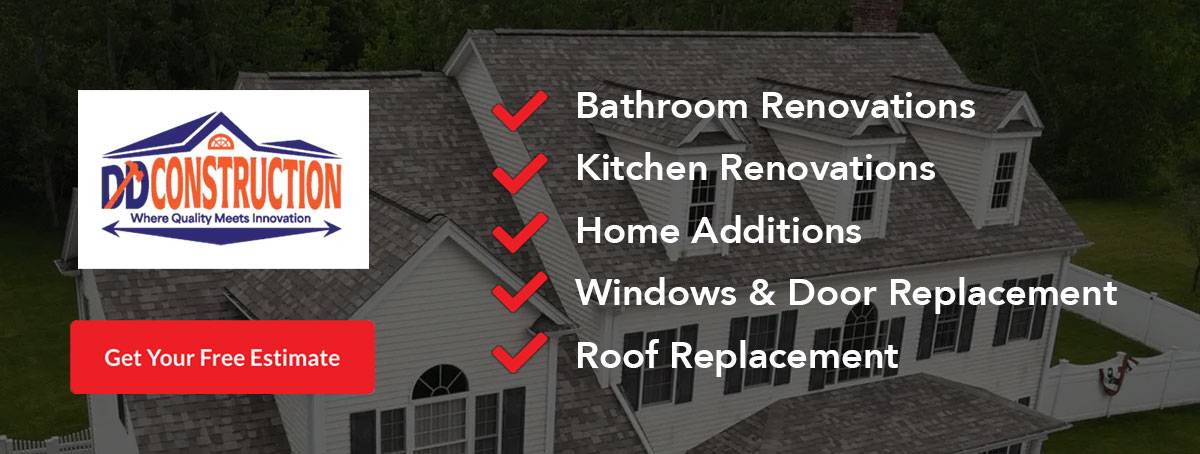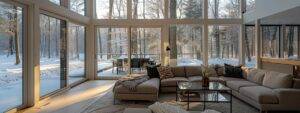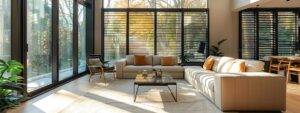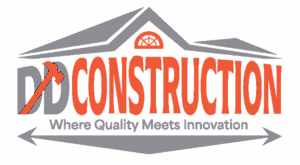The modern home improvement landscape demands efficiency, durability, and aesthetic appeal. Homeowners in Massachusetts are increasingly focused on upgrading their windows to reduce their energy bills, enhance home comfort, and bolster property value. Understanding the science behind energy-efficient windows, the types available, and how professional installation (dd construction) can maximize energy savings is key to making a well‐informed decision. Upgrading windows not only cuts utility costs but also contributes to a healthier, more comfortable living environment through improved insulation, noise reduction, and even enhanced curb appeal. With rising energy costs and stricter building codes, homeowners are looking for innovative solutions that combine sustainability with cost-effectiveness. This article provides comprehensive guidance on energy-efficient window replacements, discussing the technical principles, return-on-investment calculations, and Massachusetts-specific incentives. It serves as an invaluable resource for anyone considering investing in home improvements that reduce energy consumption and protect the environment while boosting property value.
The article will walk through the science behind energy-efficient windows and explore the benefits and drawbacks of different window types. Additionally, it emphasizes the importance of professional installation and examines cost factors and state incentives, offering real-world examples and technical data. By integrating a deep dive into window performance with practical advice on selection, financing, and maintenance, homeowners can make educated decisions that deliver long-term savings and improved comfort. With detailed analyses and data-supported examples, this guide is ideal for Massachusetts residents who want to optimize their homes for maximum energy savings. The comprehensive discussion that follows covers every aspect of window replacement—from materials and design choices to financing and rebates—ensuring you make a fully informed investment.
How Do Energy-Efficient Windows Lower Your Energy Bill?
Energy-efficient windows lower your energy bill by minimizing the exchange of heat between your indoor and outdoor environments. From a scientific standpoint, these windows feature advanced glazing, insulating frames, and low-emissivity (Low-E) coatings that reduce heat loss during winter and limit heat gain during summer. The combination of multiple glass panes and gas fills between the panes creates a barrier against thermal transfer. This technology significantly lowers the need for heating in winter and cooling in summer, leading to notable energy cost reductions.
What Is the Science Behind Energy Efficiency in Windows?
The science behind energy efficiency in windows revolves around heat transfer mechanisms such as conduction, convection, and radiation. Energy-efficient windows address these issues by utilizing materials that slow down each of these processes. For instance, Low-E coatings reflect infrared radiation, preserving indoor heat during colder months and keeping interior spaces cooler in the summer. Additionally, double or triple glazing enhances insulation, while inert gases like argon or krypton between panes further reduce convective heat loss. The scientific principles behind these technologies directly correlate to improved thermal performance and energy savings, making them essential innovations in home energy performance.
How Much Can You Save on Heating and Cooling Costs?
Studies have indicated that upgrading to energy-efficient windows can reduce heating and cooling costs by 12% to 30% annually, depending on the age of the existing windows and the home’s overall insulation. In Massachusetts, where weather extremes are common, the estimated savings can be substantial over time. Home energy assessments often reveal that modern windows significantly reduce the strain on HVAC systems, thereby not only lowering energy bills but also prolonging the lifespan of the heating and cooling equipment. These savings provide an attractive return on investment, especially when combined with state and federal incentives.
Why Are Energy Star Certified Windows Important?
Energy Star certified windows are important because they meet stringent energy efficiency standards set by the U.S. Environmental Protection Agency and the U.S. Department of Energy. These windows have been rigorously tested to ensure they minimize energy loss and offer superior performance compared to non-certified options. Certification ensures that the windows perform as advertised, providing reliability and consistency in energy savings. Homeowners can confidently invest in Energy Star products knowing that they are contributing to reduced energy consumption, lower utility bills, and decreased greenhouse gas emissions.
Which Types of New Windows Offer the Best Energy Savings?
Different types of new windows offer varying levels of energy savings based on design, pane configuration, and operational features. Selecting the right window type depends on factors such as climate, home design, and the user’s specific energy-saving goals. Homeowners are often presented with the choice between double-pane versus triple-pane units, specialized designs like bay and casement windows, and various construction materials. Each option carries unique benefits that translate into improved insulation, reduced drafts, and enhanced natural lighting.

What Are the Benefits of Double-Pane vs. Triple-Pane Windows?
Double-pane windows consist of two glass layers with an insulating gas fill, while triple-pane windows add an extra layer for enhanced insulation. Triple-pane windows typically provide superior energy efficiency and noise reduction compared to double-pane alternatives. Although triple-pane windows incur higher initial costs, their increased thermal performance can lead to more significant long-term energy savings, particularly in extreme climates. Homeowners should evaluate their local climate conditions and energy needs. Real-world examples show that in areas with significant temperature fluctuations, triple-pane windows can reduce heat loss by up to 50% more than traditional double-pane windows.
How Do Bay and Casement Windows Affect Energy Efficiency?
Bay and casement windows not only add aesthetic appeal but also contribute to energy efficiency when properly installed. Bay windows often feature multiple glass surfaces and deep sills, which can be designed with high-performance glazing to minimize heat loss. Casement windows, with their unique hinged construction, seal tightly when closed, reducing drafts and ensuring optimal insulation. Their design allows for increased natural ventilation paired with effective thermal sealing, thereby enhancing indoor comfort and lowering energy costs. The precise fit and finish of these window types are critical factors that influence their overall efficiency.
How Do Window Materials Influence Energy Performance?
The materials used in window production play a crucial role in overall energy performance. High-quality materials such as fiberglass, vinyl, and wood-clad systems each offer distinct advantages. Fiberglass windows provide excellent thermal stability and durability, even in extreme temperatures. Vinyl windows are known for their low maintenance and cost-effectiveness, while wood-clad windows offer superior insulation with additional natural aesthetics. The coefficient of thermal resistance (R-value) of each material directly impacts the window’s ability to resist heat flow, making material selection a key decision for homeowners aiming to maximize energy efficiency.
What Is the Role of Professional Installation in Maximizing Energy Savings?
Professional installation is vital to ensure that energy-efficient windows perform at their optimal level. Even the best-designed windows can underperform if not installed correctly. Proper installation ensures that windows are sealed tightly and aligned perfectly, preventing air leaks that may compromise energy efficiency. Professional installers also handle the necessary adjustments for framing, insulation, and integration with existing building structures, ultimately maximizing the window’s thermal performance. When homeowners invest in professional installation, they are not only protecting their investment but also significantly enhancing energy savings and overall home performance.
How Does Proper Installation Affect Window Performance?
Proper installation of windows affects performance by eliminating gaps, optimizing sealing, and ensuring accurate alignment. These factors are crucial to prevent drafts and energy loss. Certified professionals use specialized tools and techniques to fit windows in a way that enhances their energy efficiency. By meticulously sealing the perimeters and verifying that each component is secure, professional installation minimizes air infiltration, ensuring that the building envelope remains intact. This results in reduced reliance on HVAC systems for maintaining indoor comfort and can lead to significant cost savings over time.
What Should You Expect During the Window Installation Process?
During the window installation process, homeowners should anticipate thorough preparation, precise measurements, and careful installation. The process typically begins with an on-site assessment to determine the best window sizes and styles. The professional installer will then remove the old windows and carefully prepare the opening to ensure a tight fit. Next, new windows are installed with high-grade sealants and insulation materials designed to block air infiltration. Homeowners are also advised to expect a brief period of post-installation inspection to verify that the installation meets energy efficiency standards and to address any minor adjustments immediately.
What Warranty Options Protect Your Energy Investment?
Warranty options play an essential role in protecting the homeowner’s energy investment. Reputable window manufacturers offer comprehensive warranties that cover defects in materials and workmanship, ensuring long-term performance. These warranties, which can range from 10 to 20 years, provide assurance that if energy efficiency degrades over time due to manufacturing flaws or installation issues, repair or replacement will be covered. Some warranties also include service agreements that provide periodic inspections and maintenance. When considering new windows, it is crucial to review the warranty details and verify that they align with the energy efficiency goals and long-term financial planning of the homeowner.
How Much Does Window Replacement Cost in Massachusetts and What Financing Options Are Available?
Window replacement costs in Massachusetts vary based on factors such as window type, installation complexity, and additional features like custom sizing or advanced coatings. Homeowners should also consider the impact of professional installation, which ensures energy savings and long-term performance. With the incorporation of financing options and rebates, the overall investment becomes more manageable. Understanding the detailed cost breakdown, including labor, materials, and associated fees, enables homeowners to budget effectively and plan for the return on investment through reduced energy bills.

What Factors Influence the Cost of New Energy-Efficient Windows?
Several factors influence the cost of new energy-efficient windows, including material quality, design complexity, glazing options, and installation requirements. For example, high-end materials like fiberglass and wood-clad systems command premium prices compared to standard vinyl windows. The number of panes (double vs. triple) and the inclusion of advanced features such as low-emissivity coatings and gas fills can further affect the cost. Labor expenses also play a significant role, as professional installation requires precision and expertise. Additionally, the overall size of the window and the need for customization based on your home’s architectural style often determine the final cost.
Are There Financing Plans or Loans for Window Replacement?
Many window replacement companies in Massachusetts offer financing options to help homeowners manage the upfront costs. Financing plans, which may include low-interest loans or deferred payment options, make it easier for homeowners to invest in energy-efficient windows. These plans are designed to align the initial investment with long-term savings from reduced energy bills. In addition to company financing, homeowners might also explore home improvement loans, personal loans, or specialized programs offered by local banks. Government-sponsored initiatives, like those under the Mass Save program, sometimes provide additional incentives in the form of rebates or tax credits.
How Do You Calculate ROI and Payback Period From Energy Savings?
Calculating the return on investment (ROI) and payback period for new energy-efficient windows involves several key metrics. First, determine the total cost of window replacement, including materials and installation. Next, estimate the annual savings on heating and cooling by comparing current energy bills with projected bills after the window upgrade. Dividing the total installation costs by the annual savings yields the payback period, often expressed in years. For example, if the upgrade costs $10,000 and saves $1,000 annually, the payback period would be 10 years. Home energy assessments and historical billing data can help refine these estimates, offering a clear financial picture to guide your decision.
What Massachusetts-Specific Rebates and Incentives Can Lower Your Window Replacement Costs?
Massachusetts offers several state-specific rebates and incentives designed to lower the cost of window replacement for energy-efficient upgrades. These programs are part of efforts to promote environmental sustainability and reduce energy consumption across the state. Homeowners can benefit from tax credits, direct rebates, and low-interest financing options that are often administered by local energy agencies or utility companies. In addition, Massachusetts building codes incentivize upgrades that meet or exceed energy performance standards, making it possible to offset some of the initial investment through long-term savings and immediate financial benefits.
Which State Programs Offer Rebates for Energy-Efficient Windows?
In Massachusetts, programs such as the Mass Save program offer rebates and incentives for upgrading to energy-efficient windows. The Mass Save program is designed to encourage residential energy improvements through reduced installation costs and tax credits. Additionally, local utilities may offer extra rebates tailored to specific regions, including incentives for both new installations and retrofits. Homeowners can visit official state or utility websites to access detailed information on current incentive amounts, eligibility criteria, and application procedures to ensure that they receive the maximum possible financial benefit when replacing their windows.
How Do Massachusetts Building Codes Affect Window Replacement?
Massachusetts building codes have stringent requirements for energy efficiency that directly influence window replacement choices. These codes mandate thermal performance standards that new windows must meet to ensure adequate insulation and air sealing. Compliance with these standards not only improves energy efficiency but also qualifies homeowners for rebates and incentives. The codes determine the minimum performance specifications such as U-factor and Solar Heat Gain Coefficient (SHGC), which are critical metrics in calculating energy savings. Homeowners must ensure that their new windows adhere to these standards, which may require working with certified installers and purchasing products that meet Energy Star qualifications.
What Permits and Inspections Are Required for Window Installation?
Window replacement in Massachusetts typically requires permits and inspections to ensure compliance with local building codes and safety standards. Permitting processes vary by municipality but generally involve submitting detailed plans that include measurements, installation methods, and product specifications. Once installed, the windows are subject to inspection by local authorities to verify that all work meets energy performance and structural integrity requirements. These inspections are critical for qualifying for state incentives and ensuring that the installation will deliver the anticipated energy savings. Homeowners should consult with their local building department or a professional contractor to navigate the permitting process effectively.
How Do New Windows Improve Home Comfort Beyond Energy Savings?
New windows offer benefits that extend far beyond lowering energy bills, notably improving overall home comfort. By reducing drafts, enhancing thermal insulation, and providing superior sound insulation, modern windows create a more controlled and pleasant indoor environment. Improved window designs help maintain consistent indoor temperatures, minimize noise pollution, and enhance natural lighting—all of which contribute to a healthier and more comfortable living space. Additionally, upgraded windows can improve indoor air quality by reducing moisture intrusion and the potential for mold growth.
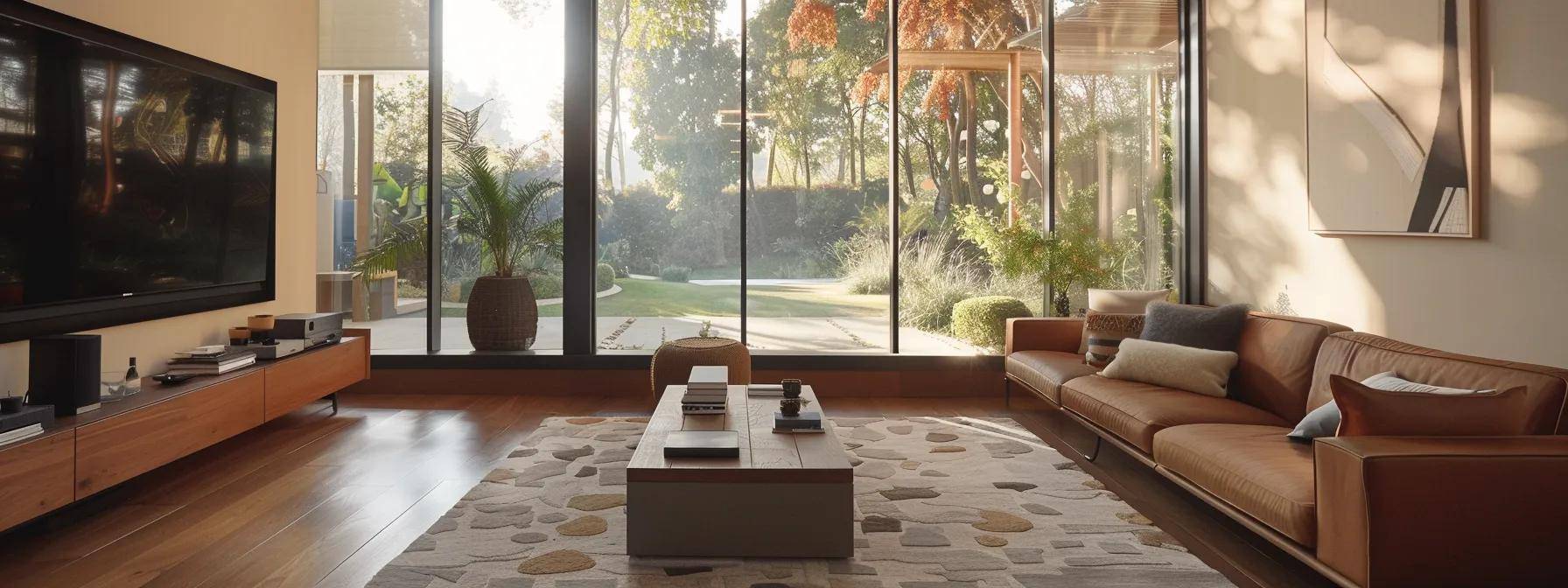
How Do Windows Affect Indoor Temperature and Draft Reduction?
Modern windows are engineered to maintain near-constant indoor temperatures by reducing heat exchange with the outdoors. Energy-efficient glazing and insulated frames significantly reduce drafts and cold spots near windows, creating a uniform temperature throughout the home. This reduction in air leakage not only improves comfort during winter by preventing cold drafts but also enhances cooling during the summer by keeping hot air at bay. The overall effect is a more pleasant indoor environment and reduced reliance on heating and cooling systems, which further lowers overall energy consumption and costs.
Can New Windows Reduce Outside Noise?
Yes, new energy-efficient windows can significantly reduce outside noise, making them an ideal solution for homes in busy urban environments or near high-traffic areas. The soundproofing capabilities of modern windows are achieved through multiple glazing layers, laminated glass, and insulating gas fills, which absorb and deflect sound waves. Studies indicate that high-performance windows can reduce noise levels by up to 50%, making interior environments more peaceful and conducive to work, relaxation, or sleep. This noise reduction feature not only improves the quality of life but also enhances the overall value of the property.
What Impact Do Windows Have on Home Value and Aesthetics?
New windows can have a substantial positive impact on both the market value and curb appeal of a home. Beyond energy savings, updated windows contribute to a modernized look, complement the architectural style of the home, and create a more inviting outdoor appearance. Real estate studies have shown that homes with upgraded windows often sell faster and at a premium compared to those with older, less efficient installations. The enhanced aesthetics and improved energy performance combine to attract buyers who value long-term energy savings and low maintenance costs, making window updates a strategic investment in home improvement.
What Are Common Questions About New Windows and Energy Bills?
Homeowners frequently have questions about the timeline for savings, maintenance tips, and how to choose the right window types to match their specific home and climate. Understanding these common queries can help prospective buyers navigate the decision-making process with confidence. With the complexity of window technology and installation practices, addressing these questions is essential for realizing the full benefits of investing in energy-efficient windows. This section provides clear, detailed answers to some of the most commonly asked questions regarding energy bills and window performance.
How Long Does It Take to See Energy Bill Savings After Replacement?
Most homeowners begin noticing energy bill savings within one heating or cooling season after installation, typically around three to six months. The improved insulation and reduced air leakage allow the HVAC system to operate more efficiently, resulting in measurable cost savings. However, the exact timeline can vary based on factors such as climate, initial window performance, and overall home energy usage. Detailed energy audits performed before and after the window replacement can help quantify these savings and provide homeowners with a clear picture of their return on investment.
Are There Maintenance Tips to Keep Windows Energy Efficient?
Maintaining energy-efficient windows involves regular cleaning, inspection, and timely repairs. Homeowners should periodically check the seals and caulking around the windows to ensure there are no gaps or signs of deterioration. Cleaning the glass with non-abrasive cleaning agents and ensuring that the frames remain undamaged can prolong the window’s life and maintain optimal performance. Additionally, scheduling annual professional inspections can detect potential issues early, ensuring that the installation remains effective. Regular maintenance not only keeps the windows performing at their best but also sustains the energy savings and comfort benefits over time.
How Do You Choose the Right Window for Your Massachusetts Home?
Choosing the right window for a Massachusetts home requires considering factors such as climate, home design, and budget. Homeowners should prioritize high-performance windows that meet Energy Star criteria and are designed to perform in extreme weather conditions typical in Massachusetts. It is important to evaluate key features such as the U-factor, Solar Heat Gain Coefficient (SHGC), and frame material to ensure optimal insulation and durability. Consulting a professional contractor, reviewing energy assessments, and taking advantage of state rebates and financing options can help in selecting the window type that best suits individual needs while maximizing energy savings and enhancing home comfort.
Detailed Lists and Tables
Below are several detailed lists and tables that summarize important aspects of energy-efficient windows from performance attributes to cost factors and maintenance tips.
List 1: Top 7 Energy-Saving Window Attributes
- Low-E Coatings – Reflect Infrared Radiation: Low-emissivity coatings on windows help reflect heat, keeping interiors warm in winter and cool during summer. These coatings improve the thermal performance of windows and are crucial for reducing energy loss.
- Multiple Glazing – Enhanced Insulation: Double or triple-pane configurations provide additional layers of insulation. The increased number of glass layers, particularly when combined with inert gas fills, minimizes convective heat transfer to optimize energy savings.
- Inert Gas Fills – Reduced Convection: Argon or krypton gases used between panes reduce the movement of heat by convection. This attribute is particularly beneficial in cold climates where maximizing warmth retention is essential for reducing heating costs.
- Energy Star Certification – Verified Performance: Energy Star certified windows meet rigorous standards for energy efficiency, ensuring that they contribute to lower energy bills. Certification offers reliability and consistent performance in various weather conditions.
- Insulated Frames – Prevent Air Leakage: High-quality window frames, made from materials like fiberglass or vinyl, ensure a tight seal against air infiltration. Insulated frames contribute significantly to overall window performance and add to energy savings.
- Weatherstripping and Sealing – Enhance Efficiency: Advanced weatherstripping and sealing techniques prevent drafts and air leaks, which are vital for maintaining the indoor temperature and reducing the workload on heating and cooling systems.
- Smart Designs – Integrated Solar Gain Control: Innovations in window design, such as controllable tints and integrated shading systems, allow homeowners to optimize solar gain. These designs help manage direct sunlight and reduce excessive heat build-up indoors.
List 2: Benefits of Professional Window Installation
- Precision Alignment – Optimized Performance: Professional installers ensure exact alignment and proper sealing, significantly reducing air leaks and enhancing overall window performance for energy savings.
- Enhanced Sealing – Longer Lasting Windows: Expert caulking and insulation during installation result in a robust seal that minimizes drafts and prevents costly energy losses, thereby extending window lifespan.
- Expert Assessment – Customization for Home Needs: Professionals evaluate the specific architectural and environmental factors of a home, recommending window types that best suit regional climate and design requirements.
- Efficient Removal – Avoiding Structural Damage: Expert procedures ensure that old windows are removed carefully, preventing damage to surrounding structures and ensuring that the new installation is secure and energy efficient.
- Quality Assurance – Minimizing Installation Errors: Certified installers adhere to strict quality standards and receive regular training, ensuring that the installation meets manufacturer and Energy Star recommendations.
- Warranty Protection – Financial Peace of Mind: Professional installations often come with extended warranties that cover defects and installation issues, protecting your investment in energy-efficient technology.
- Compliance with Regulations – Maximized Incentives: A professional installation process ensures that all work complies with local building codes and regulations, which is essential for qualifying for various state and utility rebates.
List 3: Key Maintenance Tips for Energy-Efficient Windows
- Regular Cleaning – Maintain Clarity and Efficiency: Clean both the glass and frames regularly using appropriate, non-abrasive cleaners to remove dirt that can obscure the Low-E coatings and reduce efficiency.
- Inspect Seals – Early Detection of Deterioration: Check window seals and weatherstripping periodically for signs of wear or damage. Early intervention can prevent energy loss and more expensive repairs later.
- Professional Inspections – Routine Performance Checks: Schedule annual or bi-annual inspections by a professional to assess the installation and performance of the windows. This ensures that potential issues are addressed promptly.
- Monitor Energy Bills – Track Savings Over Time: Compare energy bills before and after replacement to monitor savings and validate the efficiency of the new windows. Consistent data analysis can provide long-term performance insights.
- Reapply Caulk – Maintain Air Seals: In areas prone to significant temperature fluctuations, reapply caulk or weatherstripping as needed to ensure that the protective seals remain intact.
- Lubricate Moving Parts – Ensure Smooth Operation: For windows with operable parts, apply a light lubricant to maintain ease of operation and prevent wear over time, which can indirectly affect the overall energy performance.
- Address Minor Damages – Prevent Escalation: Tackle small cracks or scratches in the glass immediately, as these can compromise the window’s insulating properties and lead to more severe energy loss over time.
List 4: Financing and Rebate Options for Window Replacement
- Mass Save Program – State-Sponsored Incentives: The Mass Save program offers rebates and low-interest financing options that help offset the high upfront costs of window replacement, encouraging upgrades that improve energy efficiency.
- Utility Company Rebates – Local Financial Incentives: Many local utility companies provide additional rebates for energy-efficient home improvements, including windows. These rebates can lower the net cost of the project significantly.
- Tax Credits – Federal and State Deductions: Homeowners may qualify for federal tax credits or state-specific deductions when installing Energy Star certified windows. These credits reduce taxable income and help improve the ROI.
- Home Improvement Loans – Low-Interest Financing: Home improvement loans with competitive interest rates enable homeowners to spread the cost over several years, making energy upgrades more financially manageable.
- Manufacturer Rebates – Direct Savings Packages: Some window manufacturers offer direct rebates when purchasing new windows through authorized dealers, creating additional savings on top of state and federal incentives.
- Energy Efficiency Grants – Community Programs: Certain municipalities or community organizations offer grants or subsidies aimed at improving residential energy efficiency, which can be used toward window replacement.
- Bundled Service Discounts – Combined Projects: When homeowners combine window replacements with other energy improvements such as door replacement or roofing upgrades, bundled service discounts are often available, reducing overall project costs.
Table 1: Comparison of Window Types and Their Energy Performance
| Window Type | Glazing | Insulated Frame Material | Average U-Factor | Estimated Cost Range | Typical Savings (%) |
|---|---|---|---|---|---|
| Double-Pane Vinyl | Double Low-E | Vinyl | 0.30 – 0.35 | $300 – $700 per unit | 12 – 18 |
| Triple-Pane Fiberglass | Triple Low-E | Fiberglass | 0.20 – 0.25 | $500 – $1000 per unit | 18 – 25 |
| Wood-Clad | Dual/Triple Low-E | Wood with vinyl cladding | 0.25 – 0.30 | $400 – $900 per unit | 15 – 20 |
| Aluminum | Double Low-E | Aluminum (thermal break) | 0.35 – 0.40 | $250 – $600 per unit | 10 – 15 |
| Custom Bay Window | Varies | Varies | 0.30 – 0.35 | $800 – $1500 per unit | 12 – 20 |
| Casement Windows | Dual Low-E | Vinyl/Fiberglass | 0.25 – 0.32 | $300 – $800 per unit | 13 – 19 |
| Awning Windows | Double Low-E | Vinyl | 0.30 – 0.35 | $250 – $700 per unit | 12 – 18 |
Before the table, note that window performance and cost vary significantly based on materials and design. After the table, it is clear that higher-performing windows with triple glazing offer the best energy savings despite higher upfront costs.
Table 2: Professional Installation Process Breakdown
| Step | Activity Description | Benefit | Average Duration |
|---|---|---|---|
| Pre-Installation Survey | Assessment of current windows and energy usage | Tailored recommendations | 1 – 2 hours |
| Removal of Old Windows | Safe extraction without damage to surrounding structures | Minimizes additional repair | 2 – 4 hours |
| Preparation of Opening | Accurate measurement and sealing of window frames | Ensures tight insulation | 1 – 2 hours |
| Installation of New Windows | Fitting and securing new windows with precision | Maximizes energy performance | 2 – 5 hours |
| Post-Installation Inspection | Verification of correct placement and sealing | Quality assurance | 1 hour |
| Cleanup and Debriefing | Removal of debris and final client walkthrough | Customer satisfaction | 30 minutes |
| Warranty Documentation | Providing certification and warranty papers | Long-term investment protection | 30 minutes |
Table 3: Financing and Rebate Options Overview
| Financing Option | Description | Typical Rebate/Discount (%) | Eligibility Criteria |
|---|---|---|---|
| Mass Save Program | State-run program for energy upgrades | 10 – 20 | Homeowner, Energy-efficient upgrades |
| Utility Company Rebates | Discounts offered by local utilities | 5 – 15 | Based on energy consumption records |
| Tax Credits | Federal and state-level tax relief programs | Up to 30% | Energy improvement investment |
| Home Improvement Loans | Low-interest loans for remodeling projects | N/A | Creditworthy applicants |
| Manufacturer Rebates | Direct discounts from window manufacturers | 5 – 10 | Purchase through authorized dealers |
| Energy Efficiency Grants | Grants offered by local communities or organizations | Variable | Low-income or environmentally focused projects |
| Bundled Service Discounts | Combined project discounts for multiple upgrades | 10 – 15 | When combining window replacement with other services |
The tables above provide a thorough overview of the key performance attributes, installation processes, and financing opportunities that can be leveraged for a successful window replacement project.
Frequently Asked Questions
Q: How do energy-efficient windows lower my energy bill? A: Energy-efficient windows work by reducing heat transfer through advanced glazing, low-emissivity coatings, and insulated frames, which keep your home warmer in winter and cooler in summer. This minimized heat loss means your heating and cooling systems work less, leading to substantial reductions in energy expenses. Additionally, these windows create a more comfortable indoor environment, which further contributes to energy savings.
Q: What makes Energy Star certified windows better than non-certified ones? A: Energy Star certified windows meet strict energy efficiency standards set by the U.S. EPA. They are rigorously tested for thermal performance, air leakage, and durability. This certification guarantees that these windows will perform consistently over time, thereby effectively reducing energy usage and lowering utility bills. Homeowners can rely on this certification as a mark of quality and performance.
Q: How long does it typically take to see savings on energy bills after replacing windows? A: Many homeowners begin to notice a reduction in their energy bills within the first three to six months following the installation of new energy-efficient windows. The exact time frame depends on factors such as local climate, the quality of the installation, and your home’s overall insulation. In colder or hotter regions like Massachusetts, savings tend to become evident more quickly due to reduced reliance on heating and cooling systems.
Q: Are there any maintenance tips for keeping my energy-efficient windows operating optimally? A: Maintaining energy-efficient windows involves regular cleaning, periodic inspections of seals and weatherstripping, and ensuring that hinges or operable parts are lubricated. Schedule annual professional inspections to catch potential issues early and keep the windows performing at their best. Keeping the windows clean and intact helps sustain their energy efficiency and extends their lifespan.
Q: What financing options and rebates are available for window replacements in Massachusetts? A: Homeowners in Massachusetts can take advantage of various incentives such as rebates through the Mass Save program, utility company discounts, and even federal tax credits. Additionally, many contractors offer low-interest financing options to help spread the upfront costs. Bundling window replacement with other energy-efficient home improvements can also unlock further discounts, making it easier to invest in energy-saving upgrades while enjoying long-term savings.

